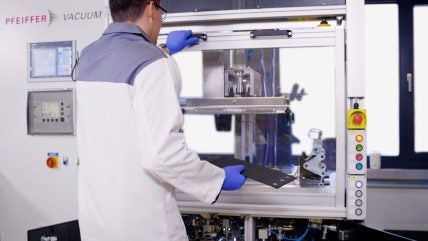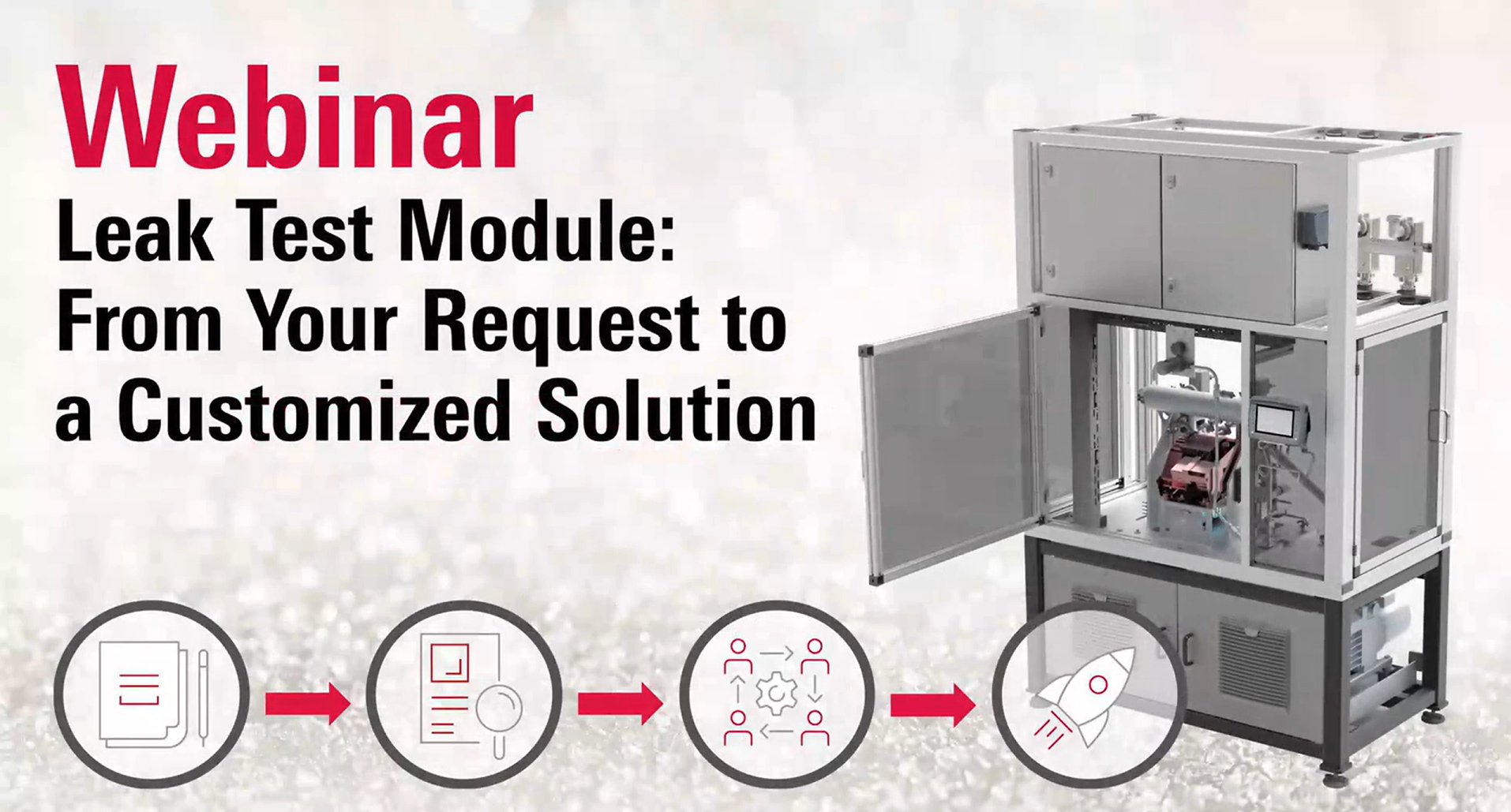
Bipolar plates – the backbone of proton exchange membrane (PEM) hydrogen fuel cell stacks – have become somewhat of a leak test problem for manufacturers in the fuel cell field. Considering the dangers of hydrogen, which can cause major explosions at concentrations of just 4% in air, low leak rate requirements are a given, and reliable testing equipment a must.
Because of the complex flow fields of bipolar plates, a safety-conscious yet slow process of ten consecutive leak tests per plate is required to test every channel in each possible way. While most manufacturers no longer perform all ten tests, they are still facing slow cycle times – a significant pain point considering a typical fuel stack for a passenger vehicle consists of somewhere between 200 and 400 layers of individual bipolar plates. This could be 700 for a truck or lorry.
Inflexible leak testing equipment has only added to the efficiency challenge. It has become particularly problematic for contract leak testing companies who must regularly swap tooling to adjust production to the geometries of different plate designs, but it is also an inconvenience for manufacturers testing their own products only.
“Even for one standard bipolar plate geometry, the end plates in the stack are always a little bit thicker than the normal plates,” explains Dr Philipp Schurig, market manager for industrial leak testing at Pfeiffer Vacuum. “When using standard leak testing systems, you have to exchange the tooling to compensate for this thickness variation.”
A costly process step
No doubt the industry dreams of moving away from bipolar plate leak tests, but Dr Rudolf Konwitschny, application specialist at Pfeiffer Vacuum, believes this is unlikely to occur. “It is a costly process step, and the fuel cell industry would rather reach a level of process perfection where leak testing is not necessary any longer,” he explains.
“This is a dream from my understanding. Even in the very mature products that have been on the market for a long period of time, there is still demand from the end user to know that the parts are tight. Think about refrigeration and air conditioning components inside a car. These components have been used in vehicles for a very long time, yet 100% leak testing of these devices is still performed.”
Faced with challenging situations like these – not only from the fuel cell space but across multiple different markets – a team of engineers at Pfeiffer Vacuum is busy working on innovative solutions in collaboration with its industry partners. In this article, we go behind the scenes of an exciting new development for the fuel cells space.
A new approach to the bipolar plate leak testing challenge
Developed at the Pfeiffer Vacuum Innovation Hub Dresden, the new Bipolar Plate Leak Test Module is a patented, turnkey system for industrial serial production and contract leak testing of bipolar plates. It takes a novel approach to reducing cycle times and features a unique lid mechanism to allow plates of varying geometries to be tested without significant impacts on set-up time.
All product development decisions were rooted in the end-user’s key requirements regarding cycle time, leak rate, and bipolar plate dimensions. The process started with a feasibility exercise to ensure a design could check all three boxes. From there, a concept was created and the vacuum components at the heart of the system were defined. A vacuum schematic including Pfeiffer Vacuum’s ASI 35 leak detector was built, and mechanical design elements such as specific chambers and feedthroughs followed. Next, electric engineers and automation specialists helped the designers arrive at a sophisticated end solution.
Most notably, two highly unique features were designed and patented to overcome the customer’s leak testing challenges. “We decided to have an exchangeable inlay so you can exchange the inner part of the measurement chamber,” says Dr Schurig. “We developed a flexible sealing mechanism which allows us to compensate varying thicknesses within the same set-up, so there is no need to change the complete test chamber.”
Secondly, a smart strategy was devised to enable users to achieve the competitive, industrial production process that so many fuel cell companies now covet. “We still do have these initial phases where manufacturers want to have maximum information and reliability [through the full number of tests], but we also needed to have the freedom to optimize our test recipe with regards to cycle time,” says Dr Konwitschny. “We did this through a reduced amount of steps and an intelligent combination of consecutive steps in order to give the required information.”
Inside the Pfeiffer Vacuum Innovation Hub
The Bipolar Plate Leak Test Module was developed through a joint development project, with frequent exchanges between colleagues in Pfeiffer Vacuum’s main German site in Asslar and the Pfeiffer Vacuum Innovation Hub in Grossroersdorf, near Dresden, the capital of Europe’s Silicon Saxony cluster. Comprised of a 600m2 office space and a 1,000m2 production area, including an ISO 6 cleanroom, the Innovation Hub was built in 2013 and began operating as a complete subsidiary of the Pfeiffer Vacuum Group in 2017.
“Based on our engineer-to-order (ETO) process, we develop and manufacture customized vacuum systems as a holistic approach in order to increase the value proposition for our customers. Our team of mechanical and electrical designers, automation and product specialists, application engineers and project managers is dedicated to compiling the best-suited solution to meet the technical needs of our customers while also considering total cost of ownership and lead times,” says Maik Jacob, head of vacuum systems at the hub. “Our value is that we add sophisticated mechanical features, automation concepts and software solutions to the remarkable products that Pfeiffer Vacuum is already selling to its customers.”
Since Pfeiffer Vacuum sells leak test modules or residual gas analysis systems for a wide range of sectors, like the semiconductor, automotive and medical markets, many types of customers are served by the Innovation Hub, but there is one common theme across all projects. Collaboration – not only between the various specialists at Pfeiffer Vacuum but also between the company and its customers – is the key to success.
“From the feasibility study at the beginning up to the final installation on customer site, the customer is the focus,” Jacob explains. “Throughout the whole development process, we are focusing on their needs and requirements. This means that they are constantly part of the development process and design release to safeguard that we meet their expectations. This is combined with a lot of communication and transparency on individual technical steps and on timelines and costs. One of our USPs when developing customized solutions successfully is to understand the customer and to end up with a solution where there are no surprises.”
Overall, the new Bipolar Plate Leak Test Modules from Pfeiffer Vacuum are expected to help fuel cell manufacturers and contract leak testers achieve their goal of efficient and flexible production without compromising on reliability. The Leak Test Modules can either be utilized as manual test stations or integrated into larger production and assembly lines, based on the customer’s needs. For R&D purposes or pre-series production, a manual test bench is often suitable, whereas high-volume series production requires an in-line test bench.
According to Jacob, while the first product generation is now commercially available, the team continues to work on improvements to further decrease cycle time and increase machine availability in order to provide customers with the most premium solutions possible. Could we be at the beginning of new era of leak testing efficiency for the fuel cells industry?
To learn more about Pfeiffer Vacuum’s engineer-to-order process, watch the webinar presentation below.


